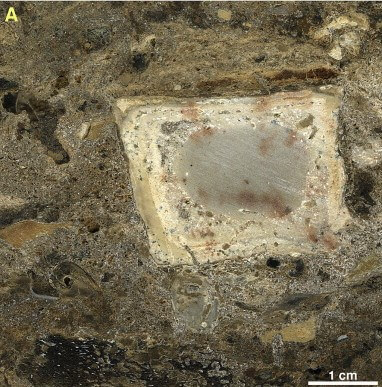The findings of researchers from Tel Aviv University and the Weizmann Institute provide an answer to a long-standing question, and imply a high cognitive and social development of humans during this period

It is generally accepted that humans discovered fire over a million years ago, but the question of when man began to control fire and make daily and controlled use of it for his needs - a central question in the history of the human race - is still disputed. Now a team of scientists has discovered evidence of the regular use of fire, and over a long period of time, at the earliest date - about 300,000 years ago, in a bonfire that burned in a magic cave near Rosh Ha'Ein. The research findings Not only do they provide an answer to a long-standing question, but also hint at a high cognitive and social development of humans, already in this early period.
Kesem Cave is a large complex that has been studied since 2000 by a team of researchers led by Prof. Avi Gofar and Prof. Ran Barkai from Tel Aviv University. Dr. Ruth Shakh-Gross mKimmel Center for Archaeological Sciences At the Weizmann Institute of Science, she has been participating in the study of the cave findings since the beginning of the excavations and collecting samples for detailed analysis in the laboratory. Dr. Shakh-Gross, an expert in the identification of archaeological materials, was able to determine that a concentration of tree ash was found in a central area of the cave. Using infrared spectroscopic methods allowed her and her research partners to identify that along with the ashes are bones and pieces of soil that were exposed to extremely high temperatures. Thus they were able to determine with certainty that a large fire was burning there.
Later, Dr. Shakh-Gross conducted micro-morphological tests of the ashes from the campfire. The test is done by digging up a "block" of soil, which she hardens in the laboratory, and cuts a very thin film from it - which can be viewed under a microscope. The film reveals the composition of the materials and how they are formed. Using this method, she discovered a large number of micro-layers of ash - which indicate repeated use of the fire. It was also discovered that the thin layers were layered in two main cycles of use, between which a sediment originating from the soil that was carried away with water from the roof of the cave to its bottom is separated. This sediment probably accumulated during the period when the cave was temporarily abandoned by its inhabitants. The research findings were published yesterday (Sunday) in the journal Journal of Archaeological Science.
Around the fire, as well as inside it, was found a large number of stone tools made of flint used for cutting meat, but a few meters away were found flint tools of a different type, which were used to perform other crafts. In addition, around the fire and inside it were found particularly large amounts of burnt animal bones, which probably indicate that the fire was used for roasting meat. Dr. Shakh-Gross and her colleagues point out that such an organization of activities in different areas, and the existence of a base for repeated activity - a kind of "home" to which people return again and again - indicate a social order and activity models known only among modern, later humans. "The findings of the research not only help determine an important turning point in the development of human society, in which man began to make regular use of fire both for the needs of roasting meat and for social needs, as a kind of 'ancient tribal campfire.' They also provide new evidence for the level of social and cognitive development of man in this region about 300,000 years ago." The cave researchers believe that these findings (and others) indicate significant behavioral and biological changes, which are probably related to the appearance of an innovative culture and a new human type in our region about 400,000 years ago.

- Researchers from Tel Aviv University solved the mystery of the appearance of early modern man in Israel already 400 thousand years ago
- Archaeologists from Tel Aviv University revealed that a modern man who lived in a magic cave 400-200 thousand years ago developed modern technologies for their time
- Why did the ancient man from the beginning of the eye cause a storm on the Internet?
- The oldest modern human remains were discovered in a cave near Rosh Ha'Ain
